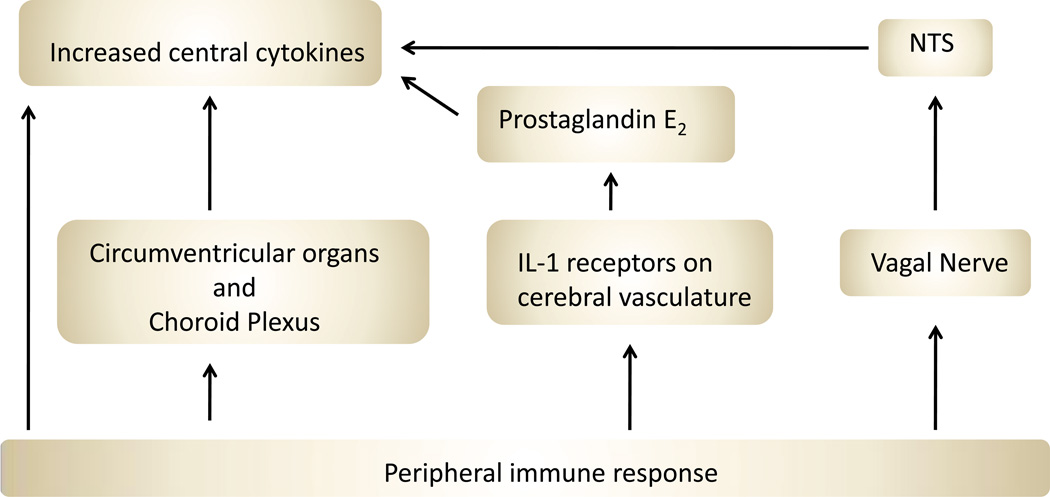Figure 3.
Schematic of peripheral immune challenge routes to brain. Peripheral signals of inflammation can take 4 main routes to influence the nervous system. Some cytokines are transported directly across the blood-brain barrier. Others stimulate cells in the circumventricular organs and choroid plexus to produce cytokines that diffuse into the brain. IL-1 can stimulate receptors on macrophages and endothelial cells associated with the cerebral vasculature, and these stimulate the release of prostaglandin E2. Finally, peripheral signals can directly activate the vagal nerve, which can alter brain response via a relay in the nucleus of the solitary tract (NTS).

